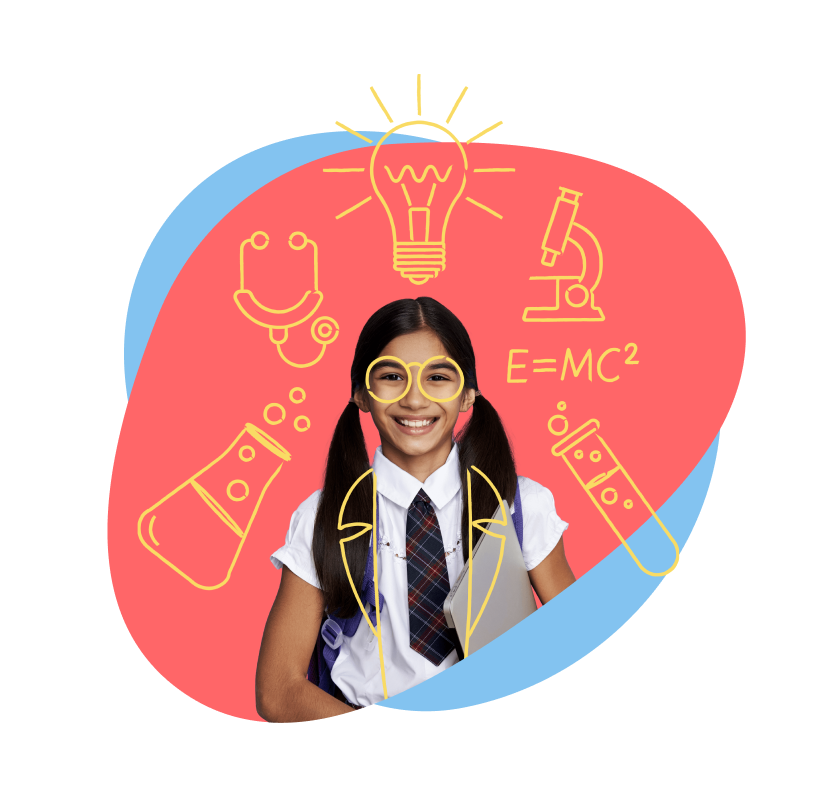Elementary school tutoring plays a crucial role in a child’s educational journey, providing them with academic support and guidance during their formative years. Whether a student is struggling with a particular subject or seeking extra enrichment, tutoring offers personalized help tailored to their needs.
This comprehensive guide provides all the essential information you need to know about elementary school tutoring.
This guide. explores the benefits of tutoring, the subjects covered, different tutoring approaches, how to find a tutor, and tips for maximizing the tutoring experience. Enjoy this guide on elementary school tutoring and its potential to enhance your child’s learning and academic success.
- Does tutoring help elementary students?
- Common subjects for elementary school tutoring
- How to find an elementary school tutor?
- Qualities to look for in an elementary school tutor
- Signs your child needs tutoring
- What is cognitive learning?
- How does cognitive learning help elementary school students?
How Does Tutoring Benefit My Child in Elementary School?
Tutoring programs help students develop study and learning skills that will help set them up for success for their entire life. Tutoring services have many advantages:
- Personalized Attention: Tutoring offers one-on-one learning tailored to a child’s unique style, pace, and interests. This individualized attention helps foster deeper understanding and active engagement.
- Targeted Remediation: Tutors identify specific subjects or areas where a student may be struggling and provide focused support to fill knowledge gaps, improving overall performance.
- Building Confidence: Elementary students who receive tutoring can experience increased confidence in their abilities. Tutors provide positive reinforcement, instilling a sense of accomplishment and motivating students to face challenges with self-assurance.
- Enhanced Study Skills: Tutoring focuses on subject-specific content and teaches valuable study skills. Students learn organization, time management, and note-taking techniques, setting a solid foundation for future success.
- Enrichment Opportunities: Tutoring can go beyond remediation, offering enrichment for academically advanced students. Tutors introduce challenging concepts, provide advanced materials, and foster critical thinking skills, nurturing a love for learning.
- Individual Progress Monitoring: Tutors closely monitor students’ progress, providing regular feedback and assessments. This allows for ongoing adjustments to the tutoring approach, ensuring optimal results.
Common Subjects Covered With Elementary Tutoring

English Tutoring for Elementary Students
English tutoring for elementary school students provides personalized attention and engaging activities, helping to improve reading, writing, and language skills. Tutors boost confidence, bridge learning gaps, and ensure students stay on track for academic success.
First-Grade English Tutoring Topics
| Reading | Writing | Language | Speaking & Listening |
| Identify the components of a sentence. | Write short stories about events and experiences | Understand grammar, capitalization, punctuation, and spelling | Engage in dialogue with peers in both small and big groups |
| Understand words, syllables, and sounds | Determine or clarify the meaning of unknown words | Ask and respond to questions concerning significant details | |
| Read with fluency and understanding | Recognize the links between words and their underlying meanings | Describe the characters, settings, items, and events |
Second-Grade English Tutoring Topics
| Reading | Writing | Language | Speaking & Listening |
| Use grade-level phonics and word analysis abilities | Write brief sentences and paragraphs on current events | Use collective nouns and reflexive pronouns to express ideas | Orally recount or convey essential concepts and facts |
| Understand and recall crucial elements from a text | Recall facts from previous questions | Create, extend, and reorganize basic and complicated phrases | Tell a story or describe an event using relevant information and detailed details |
| Ask and answer who, what, where, when, why, and how questions | Participate in collaborative research and writing projects | Be familiar with grammar, capitalization, punctuation, and spelling | To clarify comprehension, ask and answer questions regarding what a speaker says |
Third-Grade English Tutoring Topics
| Reading | Writing | Language | Speaking & Listening |
| Learn the definitions of common prefixes and suffixes | Write brief opinion papers with supporting evidence | Explain how nouns, pronouns, verbs, adjectives, and adverbs work. | Participate successfully in a variety of collaborative discussions |
| Understand a break down multi-syllable words | Use linking words and phrases to connect opinions and reasons | Use knowledge of language and its conventions when writing, speaking, reading, or listening | Determine the key concepts and supporting elements while reading aloud |
| Determine the text’s primary concept and crucial details | Write stories on actual or imaginary experiences or occurrences | Determine the meaning of words and phrases that are uncertain or have many meanings |
Fourth-Grade English Tutoring Topics
| Reading | Writing | Language | Speaking & Listening |
| Determine the meaning of words and phrases as they are used in a text | Write informative/explanatory texts to examine a topic | Use relative pronouns and progressive verb tenses | Build upon others’ ideas in collaborative conversations |
| Explain events, ideas, or concepts in a historical, scientific, or technical text | Convey ideas and information clearly | Order adjectives within sentences | Paraphrase portions of a text read aloud |
| Determine the main idea of a text and how it is supported by key details | Write short stories based on real or imagined experiences and events | Understand figurative language and relationships in word meanings | Use descriptive details and facts to report on a story |
Fifth-Grade English Tutoring Topics
| Reading | Writing | Language | Speaking & Listening |
| Correctly quote from a text | Create informative/explanatory writings that explore a topic | Explain how conjunctions, prepositions, and interjections work | Participate in group conversations |
| Determine story themes and primary concepts | Clearly communicate thoughts | Recognise and employ appropriate verb tense | Express views clearly and build on the ideas of others |
| Determine the definition of terms as they appear in a text | Write in a clear and cohesive manner | Use punctuation to separate items in a series | Summarize written material that has been read orally |
Sixth-Grade English Tutoring Topics
| Reading | Writing | Language | Speaking & Listening |
| Determine the main concept of the texts | Write in a clear and cohesive manner | Change up the wording patterns to add meaning, intrigue, and flair | Examine the main points made |
| Examine how a major concept is presented, illustrated, and expanded in a book | Arguments should be written with specific reasoning and proof | Recognize and utilize pronouns correctly | Ask and answer specific questions on various topics |
| Determine the significance of words and phrases appearing in a text | Transitions can be used to clarify links between ideas and concepts | Distinguish and explain the distinction between similar terms | Demonstrate understanding of diverse points of view |

Math Tutoring for Elementary Students
Math tutoring for elementary school students offers personalized guidance and interactive learning experiences, enhancing their math skills. Tutors boost confidence, fill knowledge gaps, and ensure students are on the path to academic success in mathematics.
First-Grade Math Tutoring Topics
| Arithmetic & Operations | Numbers & Counting | Measurement & Data | Geometry |
| Add and subtract within 20 using simple concepts | Count, read, and write numbers to 120 | Order and compare lengths of objects | Create two-dimensional and three-dimensional shapes |
| Solve basic word problems using addition and subtraction | Use the concept of ‘tens and ones’ | Write and tell time in hour and half-hour intervals | Learn the difference between defining and non-defining attributes |
| Gain an understanding of the equal sign | Understand the concept of place value and how it applies to numbers | Write and tell the time in hour and half-hour intervals | Divide basic shapes like circles and rectangles into two and four |
Second-Grade Math Tutoring Topics
| Arithmetic & Operations | Numbers & Place Value | Measurement & Data | Geometry |
| Develop addition and subtraction skills within 100 | Understand the concept of place value | Learn about measurements | Understand differences between shapes |
| Mentally calculate sums and differences | Develop the ability to read, write, and count numbers up to 1,000 | Tell and write time in a.m. and p.m. | Identify triangles, quadrilaterals, pentagons, hexagons and cubes |
| Work with groups of objects to gain a solid foundation for multiplication | Add and subtract using an understanding of place value and the concept of ‘base ten’ | Solve problems involving currency | Divide shapes into equal shares, and become familiar with describing the shares |
Third-Grade Math Tutoring Topics
| Arithmetic & Operations | Numbers & Place Value | Measurement & Data | Geometry | Fractions |
| Solve problems involving multiplication and division within 100 | Rounding whole numbers to the nearest 10 or 100 | Writing and telling time to the nearest minute | Gain a further understanding of shapes and their attributes | Learn basic skills related to fractions |
| Recognize patterns in basic arithmetic | Add and subtract within 1,000 | Solving problems involving addition and subtraction | Identify quadrilaterals and continue to divide shapes into equal parts | Explain equivalence and compare fraction size |
| Multiply whole numbers by multiples of 10 | Measure and estimate liquid volumes and masses of objects |
Fourth-Grade Math Tutoring Topics
| Arithmetic & Operations | Numbers & Counting | Measurement & Data | Geometry | Fractions |
| Use addition, subtraction, multiplication, and division to solve multi-step word problems | Add, subtract, and multiply multi-digit whole numbers | Solve problems involving measurement and conversions of measurement units | Drawing and identifying lines and angles | Understand fraction equivalence and ordering |
| Become familiar with multiples and factors | Use understanding of place value to compare two numbers | Use addition, subtraction, multiplication and division to solve measurement problems | Classifying two-dimensional shapes based | Compare two fractions with different numerators and denominators |
| Generate number and shape patterns | Round multi-digit whole numbers to any place | Apply formulas related to area and perimeter | Recognize and draw a line of symmetry in shapes | Apply knowledge of addition, subtraction and multiplication to work with fractions |
Fifth-Grade Math Tutoring Topics
| Arithmetic & Operations | Numbers & Place Value | Measurement & Data | Geometry | Fractions |
| Write and interpret expressions using parentheses, brackets, and braces | Continue to increase knowledge of the place value system | Convert measurement units and represent and interpret data | Graph points in a coordinate system to help solve real-world math problems | Add and subtract fractions |
| Analyze and generate patterns and their relationships based on given rules | Read, write, and compare decimals to thousandths and round decimals to any place | Understand concepts of volume related to addition and multiplication | Classify two-dimensional figures into categories based on their properties | Extend previous knowledge to multiply and divide fractions |
| Add, subtract, multiply, and divide decimals to hundredths | Apply knowledge to real-world problems involving multiplication of fractions and mixed numbers |
Sixth-Grade Math Tutoring Topics
| Ratios | Numbers Systems & Fractions | Expressions & Equations | Geometry | Statistics and Probability |
| Gain familiarity of ratios and use the proper language to describe a ratio relationship between two quantities | Divide fractions by fractions by applying their previous skills in multiplication and division | Extend previous skills in arithmetic to more challenging algebraic expressions | Solve real-world problems using area, surface area and volume | Understand statistical variability |
| Apply understanding of ratio and rate to solve real-world math issues | Adding, subtracting, multiplying, and dividing multi-digit decimals | Solving one-variable equations | Represent three-dimensional figures using nets | Work with distributions and summarize numerical data sets |
| Learn how to represent and analyze quantitative relationships between variables | Find the surface area of three-dimensional shapes | Learn how data sets can be described by their center, spread, and shape |

Science Tutoring for Elementary Students
Science tutoring for elementary school students provides individualized support and hands-on learning opportunities, fostering their understanding of scientific concepts. Tutors build confidence, address knowledge gaps, and help students excel in their science studies.
First-Grade Science Tutoring Topics
| Earth & Space Sciences | Life Science | Physical Science |
| Observe patterns of the sun and moon | Ecosystems | Understand how light interacts with different materials |
| Identify and make observations about different seasons | Identify features of plants and animals | Distinguish between solids and liquids |
| Classify various Earth materials | Understand how plants and animals survive | Understand the relationship between movement and sounds |
Second-Grade Science Tutoring Topics
| Properties Of Matter | Life Science | Earth & Space Sciences |
| Identify properties of different kinds of matter | Understand how plants and animals rely on their ecosystems | Identify and locate areas where water is found on Earth |
| Understand changes caused by heating and cooling | Observe how humans impact the environment | Understand how wind & water impact the environment |
| Identify when changes in matter are reversible or not | Understand plants & animals live in different places on land and in water | Map different types of landforms and bodies of water |
Third-Grade Science Tutoring Topics
| Earth & Space Sciences | Life Science | Force & Motion |
| Identify differences in climates of different regions of the world | Understand plants & animals have unique and diverse life cycles | Understand different types of forces |
| Recognize typical weather and climate conditions | Inheritance and variation of traits help organisms survive | Effects of force on the movement of objects |
| Environmental impacts on the ability of organisms to survive | Effects of balance and unbalanced force on the movement of objects |
Fourth-Grade Science Tutoring Topics
| Earth & Space Sciences | Life Science | Physical Science |
| Causes and impacts of weathering and erosion | Explain how organisms interact with their environment | Understand that energy can exist in different forms |
| How weathering and erosion has shaped Earth | Analyze how different organisms grow based on their genetics and environment | Renewable vs. non-renewable energy |
| Understand why light is needed to see | How humans use technology to survive in a variety of climates | Explain the relationship between the speed and energy of objects |
Fifth-Grade Science Tutoring Topics
| Structure & Properties Of Matter | Life Science | Earth Systems Science |
| Develop models of particles that make up matter | Understand how living things interact with each other and the environment | Human impacts on the Earth and its ecosystems |
| Chemical changes | Cycles of matter and energy transfer in ecosystems | The Earth and the Solar System |
| How matter changes in state but still remains the same matter | How plants and animals get the materials they need to live | How the geosphere, biosphere, hydrosphere, and atmosphere interact |
Sixth-Grade Science Tutoring Topics
| Structure & Properties Of Matter | Life Science | Force & Motion | Earth Systems |
| How substances are made from combinations of atoms | Dynamics and cycles of ecosystems | Gravitational, electrical, and magnetic forces | Patterns of the sun, moon, and stars |
| Different types of energy | Interdependent relationships in ecosystems | Newton’s Third Law | The role of water in Earth’s surface processes |
| Chemical reactions and the effects of thermal energy | Growth and development of organisms | Relationships between energy and forces | Weather and climate |
Check out these 10 tips for a productive school year.
How Do You Find an Elementary Tutor?
With over 30 locations and growing, GradePower Learning offers the only tutoring curriculum focused on cognition coaching, turning setbacks into strengths and empowering young minds to reach for more.
Find a tutoring center near you.
Qualities to Look for in an Elementary Tutor
When searching for a high school tutor, finding someone with the following qualities is essential.
Connection and Professionalism
Look for a tutor who can establish a strong connection with your child. They should be professional in their approach, maintain clear communication, and demonstrate reliability and punctuality.
Energy and Enthusiasm
An effective elementary school tutor should bring energy and enthusiasm to each session. Their passion for the subject matter can inspire the student and make the learning process engaging and enjoyable.
Caring and Nurturing
A caring and nurturing tutor creates a supportive learning environment. They should genuinely care about the student’s progress, well-being, and overall development. This fosters trust and encourages students to ask questions and seek help when needed.
Adaptable and Flexible
Elementary school students have diverse learning styles and needs. A tutor who can adapt their teaching methods and strategies to accommodate different learning preferences is invaluable. Tutors should also be flexible in scheduling sessions and adjusting their approach based on the student’s progress.
Understanding and Respectful
A great elementary school tutor understands students’ challenges and respects their circumstances. Tutors should be patient, empathetic, and able to explain concepts in a way that suits the student’s comprehension level. Mutual respect between the tutor and student is essential for effective learning.
When choosing an elementary school tutor, consider these qualities alongside their qualifications, experience, and subject expertise. Finding a tutor who can help with academic improvement and foster a positive and supportive learning environment for the student’s overall growth is important.
Learn more about Elementary School tutoring programs.
5 Signs Your Child Needs Tutoring
Is your child facing challenges in their academic pursuits? Recognizing the signs that your child could benefit from tutoring is crucial to helping them regain confidence and excel in their studies. Here are some key indicators to look out for.
1. Declining Grades
If you notice a persistent downward trend in your child’s grades, it could show that they are struggling with certain subjects or concepts.
2. Avoidance of Homework or School
When your child tries to dodge doing their homework or displays a lack of enthusiasm towards attending school, it may signify a need for extra support, such as an elementary school tutor.
3. Spending Too Much or Too Little Time on Homework
An imbalance in the time your child spends on homework can suggest they need help understanding the material or breezing through it without grasping the concepts. How long should homework take each night? Follow these PTA Recommendations.
4. Difficulty Grasping or Retaining Concepts
If your child needs help comprehending new ideas or needs help to retain what they’ve learned. It might be beneficial to seek elementary tutoring help to help reinforce their understanding.
5. Schoolwork Disorganization
If you notice poor schoolwork management, such as losing assignments, forgetting deadlines, or experiencing trouble prioritizing tasks, it might indicate the need for elementary school tutoring to improve organizational skills and study habits.
By identifying these signs early on, you can give your child the tailored guidance they need to thrive. Elementary school tutoring can offer personalized attention, reinforce foundational knowledge, and instill effective learning strategies. Remember, every child learns at their own pace, and seeking support is a positive step towards unlocking their full potential.
What Is Cognitive Learning?
Cognitive learning is a way of learning that helps students use their brains more effectively. This method of learning is active, constructive, and long-lasting. It encourages students to fully engage in learning so learning, thinking, and remembering get easier.
Cognitive learning isn’t about memorization or repetition. It’s about developing proper understanding and learning how to learn.
Cognitive learning strategies can include the following:
- Asking students to reflect on their experience
- Helping students find new solutions to problems
- Encouraging discussions about what is being taught
- Helping students explore and understand how ideas are connected
- Asking students to justify and explain their thinking
- Using visualizations to improve students’ understanding and recall
How Does Cognitive Learning Help Elementary School Students?
Elementary students benefit from cognitive learning since it makes sure that the material is grasped rather than just momentarily memorizing it. Using this learning technique, elementary school students will gain a more profound and enduring comprehension of maths, English, science, and French academic ideas.
Cognitive skills are what separate good learners from so-so learners. Children fall behind Without developed cognitive skills because they can’t integrate new information as they are taught.
Remember: The ability to learn and make sense of new information is crucial to successful learning—and that’s why developing cognitive skills is so important.
Cognitive learning helps by . . .
- Identifying elementary school students’ preferred learning styles, whether they are visual, auditory, kinaesthetic, or other types of learners
- Teaching students how to approach learning with a “big picture” perspective can help them comprehend how little ideas connect to larger ones.
- Assisting students in effectively and efficiently applying new ideas
Ready to see how GradePower Learning can help your elementary school student? Find a location and Enroll now.





